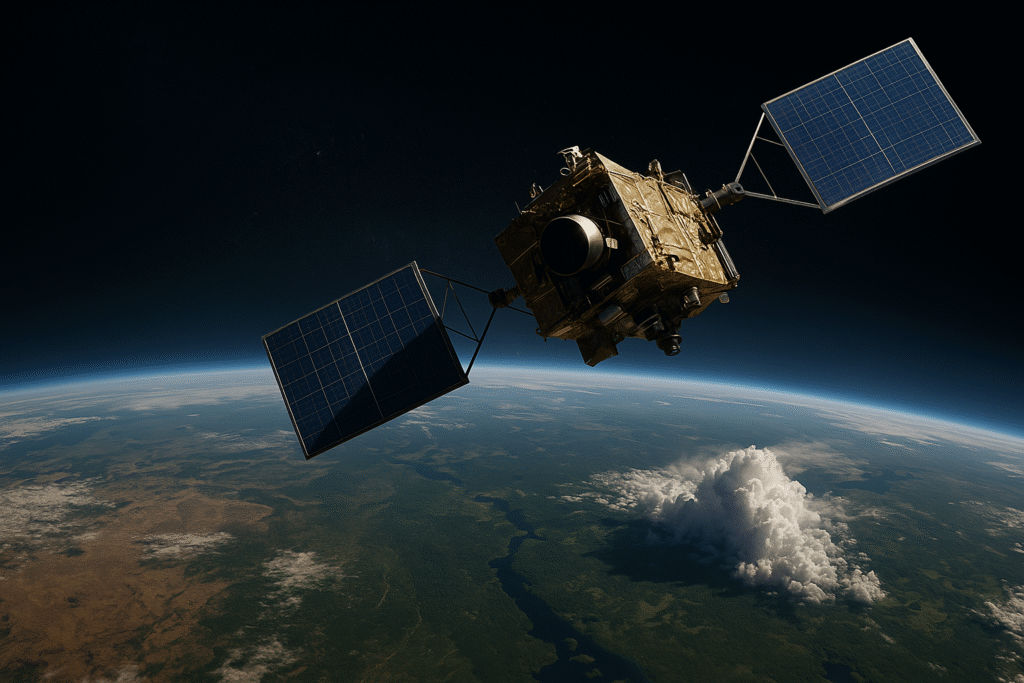NASA is stepping into a new era of space technology by testing artificial intelligence to create smarter Earth satellites. In a recent demonstration, an Earth observing satellite was able to autonomously scan, process, and analyze images, and then redirect its sensors all in under 90 seconds and without any human assistance.
This milestone marks a major evolution in Earth observation. AI isn’t just enhancing performance; it’s giving satellites the ability to think, react, and prioritize. As the climate crisis intensifies, smarter, faster decisions from space could be the key to saving lives and protecting ecosystems.
ECOSTRESS Gets a Brain Upgrade
The spotlight of NASA’s recent success is the ECOSTRESS instrument aboard the International Space Station. Traditionally used to monitor plant temperatures and stress levels, ECOSTRESS was enhanced with a powerful edge computer built by IBM enabling real time onboard decision making.
In the test, the AI predicted the satellite’s future path, analyzed images for events like wildfires, and autonomously adjusted where the satellite should point its sensors. The test proved that smarter Earth satellites are not only possible, but already operational. The ability to focus on immediate events, instead of simply collecting routine data, elevates the value of every mission.
Why This Breakthrough Matters
Dr. Will McCarty of NASA’s Earth Science Division called the test a paradigm shift. He explained, We’re empowering satellites to think critically about the data they collect. They’re not just flying cameras anymore they’re decision makers.
He believes these AI systems will redefine how scientists approach environmental monitoring, disaster forecasting, and even agriculture. By minimizing time between data capture and analysis, smarter Earth satellites can serve as real time warning systems.
Inside NASA’s Test Lab
Sarah Jennings, a NASA JPL systems engineer, was present when ECOSTRESS made its first AI powered decision. It was like watching a mind wake up, she said. The satellite identified fire signatures before we even had a chance to check. It was emotional we saw how this tech could actually save lives in the future.
Sarah’s account highlights a growing human AI collaboration in space, where trust in autonomous systems is becoming real and deeply personal.
How Onboard AI Works
The true strength of this technology lies in edge computing a process where satellites analyze and act on data directly, without needing to send it back to Earth.
This offers three huge benefits-
Speed: Reactions to wildfires or floods can happen in real time.
Efficiency: Satellites send only high priority, meaningful data.
Autonomy: Human teams don’t need to micromanage or constantly re task instruments.
NASA is aiming to scale this by creating a network of smarter Earth satellites that communicate, collaborate, and optimize each other’s observations in orbit essentially forming a real time AI powered monitoring grid around our planet.
Ethical and Technical Challenges
Despite its promise, this technology raises important questions. What if the AI misses something critical? How do we ensure decisions remain ethical and non biased? What’s the backup if the onboard system fails?
NASA’s teams are rigorously testing every AI module under extreme space conditions. As Sarah Jennings puts it, The stakes are sky high literally. So every decision made by the satellite must meet human standards.
A Smarter Future in Orbit
The journey from passive Earth observation to active, intelligent decision making is well underway. By enabling real time data processing and autonomous targeting, NASA’s smarter Earth satellites are changing the game for climate science, emergency response, and environmental protection.
This is not just a tech upgrade; it’s a mission upgrade. With AI on board, we are entering a future where satellites don’t just look down they think, choose, and act in ways that could reshape how we manage the planet below.

